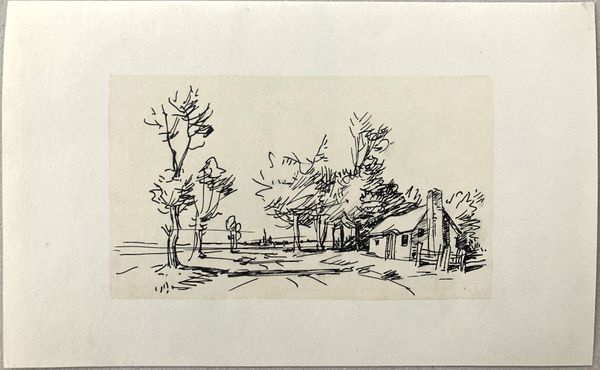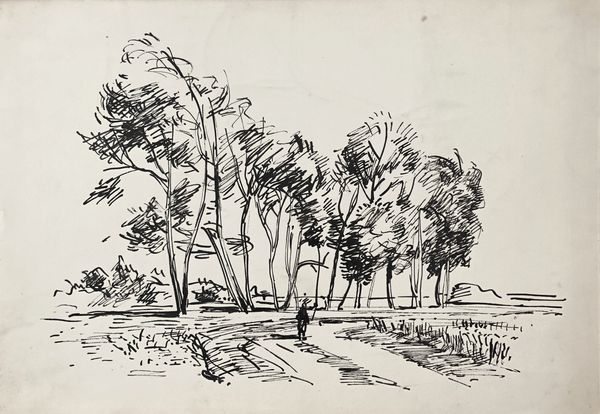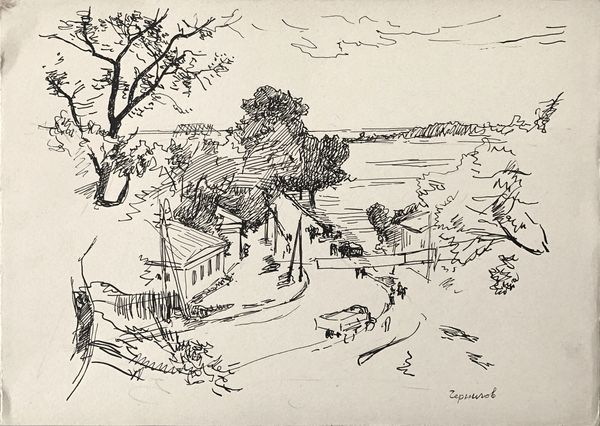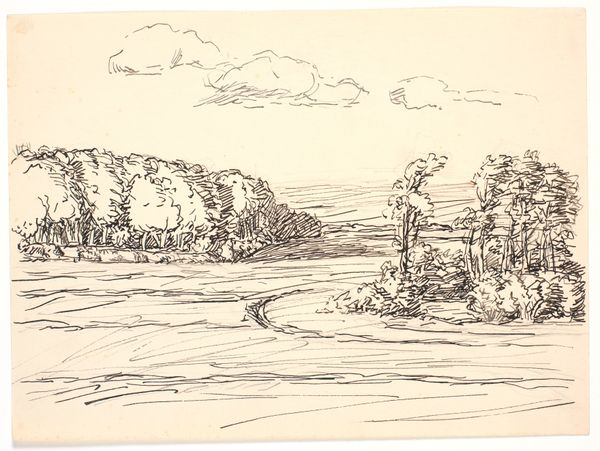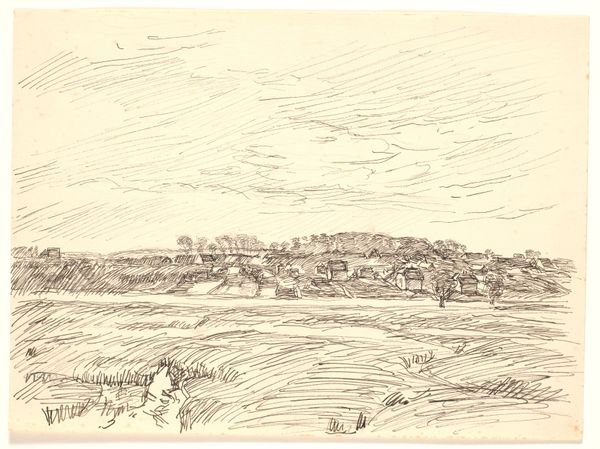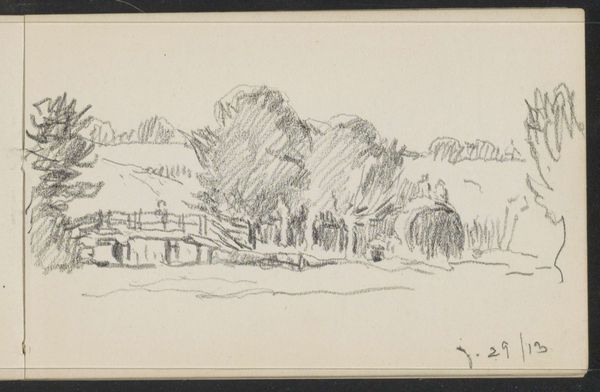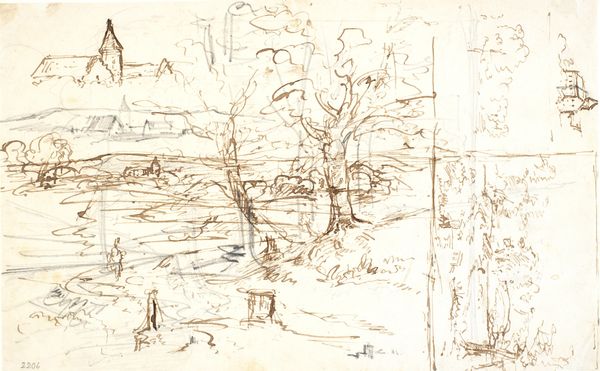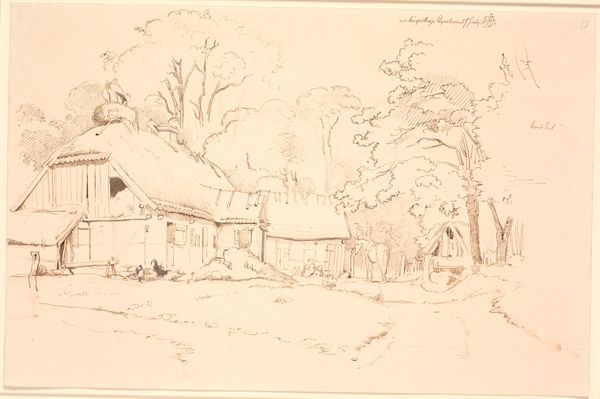
drawing, paper, ink
#
drawing
#
ink drawing
#
landscape
#
paper
#
ink
#
realism
Copyright: Hryhorii Havrylenko,Fair Use
Curator: Before us, we have Hryhorii Havrylenko’s "The village of Drobovka," a drawing from 1957 rendered in ink on paper. It resides in a private collection. Editor: My first impression is how the sparseness of line creates a dynamic sense of movement. It feels brisk, almost windy, capturing a fleeting moment in the landscape. Curator: I agree. Considering it was made in 1957, we need to recognize the significance of depicting a Ukrainian village so straightforwardly. After Stalin's death, and with the start of the Thaw, a less ideologically constrained view of rural life became possible. It subtly reflects that shift, wouldn't you agree? Editor: Absolutely, the absence of overt socialist realist tropes speaks volumes. But aesthetically, the varying weight of the ink lines is what draws me in. Look how he suggests volume in the trees with dense cross-hatching, versus the simple, almost gestural rendering of the clouds. Curator: Note too how the composition invites the viewer in. The road, executed with brisk strokes, acts as a visual pathway leading us into the depth of the landscape, which then promptly disappears beyond the horizon. It’s about access, but also the suggestion of infinite possibilities within Ukrainian territory. Editor: That is very compelling. It's also important not to over-romanticize, though. Consider the material conditions. The drawing is on paper with what looks like ink, readily accessible tools, maybe it shows a personal exercise more than a political declaration? Curator: Precisely, the personal is political! These works offered alternative representations of Ukrainian identity during the period of de-Stalinization. By showing Drobovka so plainly, Havrylenko subtly asserted its value, moving past enforced idealizations. Editor: Thinking of the ink's materiality and applying structuralist thought I appreciate the almost diagrammatic representation of elements. This underscores a tension between representation and abstraction, capturing something more profound about the essence of "village". Curator: Considering both the historical circumstances of the late 1950s and your compelling analysis of his formal choices, the drawing provides rich insight into the place and time. Editor: Yes, engaging with the materiality has clarified both the technique and the conceptual framework of the drawing. It feels far more significant now.
Comments
No comments
Be the first to comment and join the conversation on the ultimate creative platform.
